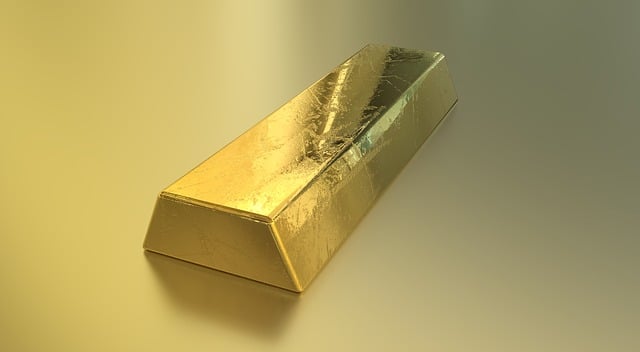When choosing between a goldiracompanies.substack.com goldiracompanies.substack.com goldiracompanies.substack.com goldiracompanies.substack.com goldiracompanies.substack.com goldiracompanies.substack.com gold ira and Gold ETFs for your retirement portfolio, consider your investment strategy, risk tolerance, and long-term objectives. A Gold IRA offers the advantage of investing in actual gold, silver, platinum, or palladium coins or bars, which can act as a hedge against economic uncertainty and inflation. This requires secure storage that meets IRS regulations and involves various fees including set-up, maintenance, and transaction costs. On the other hand, Gold ETFs like GLD or SLV provide a more convenient, liquid, and cost-effective way to gain exposure to gold prices without the need for physical ownership or storage. Your decision should be informed by a comprehensive analysis of fees, security, liquidity, and how each option fits within your broader financial planning goals. Remember to select a reputable Gold IRA provider that offers competitive rates, quality customer service, and secure storage solutions.
Navigating the landscape of retirement savings, investors often ponder the merits of diversifying their portfolios with precious metals. A Gold IRA versus Gold ETFs comparison is a crucial step for those seeking to understand and evaluate which investment aligns best with their retirement goals. This article dissects the key aspects of Gold IRAs and Gold ETFs, scrutinizing services and offerings from top-rated companies in the sector. We delve into the factors that differentiate these investment vehicles, including costs, liquidity, market exposure, and diversification potential. Whether you’re a seasoned investor or new to the concept of gold as part of your IRA, this analysis will equip you with insights to make an informed decision between a Precious Metals IRA and Gold ETFs for your retirement portfolio.
- Understanding Gold IRAs and ETFs: A Comparative Analysis
- Top Gold IRA Companies: An Overview of Services and Offerings
- Factors to Consider When Choosing Between a Gold IRA and Gold ETFs
- Precious Metals IRA vs. Gold ETFs: Investment Costs and Fees Breakdown
- Gold IRA vs. Gold ETFs: Liquidity, Diversification, and Market Exposure
- How to Evaluate the Best Gold IRA Companies for Your Retirement Portfolio
Understanding Gold IRAs and ETFs: A Comparative Analysis

Investing in retirement can be a complex endeavor, with various options to consider. Among these, Gold IRAs and Exchange-Traded Funds (ETFs) represent two distinct approaches to allocating assets within an Individual Retirement Account (IRA). A Gold IRA allows investors to own actual gold bullion, coins, or bars as part of their retirement portfolio. This form of investment is often favored for its tangible value and hedge against inflation and economic uncertainty. On the other hand, Gold ETFs provide a more liquid and diverse exposure to gold prices without the need for physical storage. They track the price of gold and can be bought and sold like stocks on an exchange.
When comparing Gold IRAs to Gold ETFs, it’s important to consider factors such as liquidity, diversification, storage requirements, and costs. Gold IRAs require purchasing and storing actual gold, which comes with responsibilities for secure storage and potential insurance needs. In contrast, Gold ETFs offer the advantage of simplicity; investors can easily buy or sell shares without worrying about physical security or transportation logistics. Additionally, Gold ETFs often have lower fees due to the absence of storage, insurance, and audit costs associated with physical gold holdings. However, while Gold ETFs may provide more flexibility and convenience, they also may expose investors to additional risks related to market liquidity and trading volatility. Both Gold IRAs and Gold ETFs serve different investment strategies and risk profiles, making it crucial for investors to evaluate their long-term retirement goals and market perspective before choosing between these two gold investment vehicles. Understanding the nuances of Gold IRAs versus Gold ETFs is key to making an informed decision that aligns with one’s financial objectives and risk tolerance.
Top Gold IRA Companies: An Overview of Services and Offerings

Investors looking to diversify their retirement portfolios often consider precious metals, with Gold IRAs being a popular choice. Top Gold IRA companies offer a range of services and products designed to facilitate the investment process in these valuable assets. These firms typically provide education on the benefits of gold IRAs versus traditional ETFs, helping investors understand how physical gold can serve as a hedge against inflation and market volatility. They assist with account setup, guiding clients through the process of rolling over existing retirement funds into a Gold IRA.
The offerings by these leading companies often include a selection of eligible precious metals such as gold coins, bars, and ETFs that comply with IRS regulations. They ensure secure storage options, either through allocated or assigned accounts in third-party depositories, providing peace of mind regarding the safety and integrity of the investments. Additionally, these companies offer ongoing customer support, market insights, and personalized advice to help investors make informed decisions. By comparing Gold IRA vs ETFs within these platforms, investors can tailor their retirement strategy to align with their financial goals and risk tolerance. This comparison often reveals that while ETFs provide liquidity and lower costs, physical gold can offer a tangible asset that may appreciate independently of the stock market’s performance.
Factors to Consider When Choosing Between a Gold IRA and Gold ETFs

When contemplating the investment between a Gold IRA and Gold ETFs, it’s crucial to assess various factors that influence their performance, risks, and benefits. The choice between these two investment vehicles should be informed by your financial objectives, risk tolerance, and market perspective. A Gold IRA allows for direct ownership of physical gold within a retirement account, offering potential benefits from the precious metal’s intrinsic value. However, this comes with responsibilities such as storage costs and the need to manage the physical security of the bullion. On the other hand, Gold ETFs provide a more accessible investment option through traditional brokerage accounts. They track the price of gold and offer exposure to the commodity without the need for physical handling or additional storage solutions. Investors in Gold ETFs benefit from liquidity, as they can buy and sell shares on major exchanges throughout the trading day. Both Gold IRAs and Gold ETFs have their own sets of costs, including management fees, which should be carefully compared to determine the most cost-effective option for your retirement savings strategy. Additionally, consider factors like market volatility, inflation, and economic trends that can affect gold prices, as well as the tax implications and investment minimums that differ between Gold IRAs and Gold ETFs. By thoroughly evaluating these aspects, you can make an informed decision that aligns with your long-term financial goals and risk management strategies.
Precious Metals IRA vs. Gold ETFs: Investment Costs and Fees Breakdown

When evaluating investment options within a self-directed IRA framework, one pivotal aspect to scrutinize is the cost and fee structure associated with precious metals IRAs versus Gold ETFs. Investors must consider not only the direct purchase costs but also the ongoing expenses such as storage fees, management fees, and transaction costs that can significantly impact net returns. Precious Metals IRAs often involve the physical acquisition of gold, silver, platinum, or palladium, each requiring secure storage, which can be custodied by specialized IRA providers. These providers typically charge an annual fee for this service, in addition to purchase and sale spreads that may differ from market rates.
On the other hand, Gold ETFs, such as those tracking the price of gold bullion, offer a more traditional investment vehicle with costs that can be more transparent and predictable. Investors in Gold ETFs through an IRA account will typically encounter expenses like brokerage fees for buying and selling shares, as well as expense ratios that cover the costs of operating the fund, including management fees and underlying costs such as the costs of the physical gold storage. These fees are usually disclosed in the fund’s prospectus and can be compared directly to those of a Precious Metals IRA. For investors keen on analyzing investment costs and fees, it’s crucial to perform a side-by-side analysis of both options. This comparison should take into account not only the initial and ongoing fees but also potential tax implications and liquidity considerations, as these factors will collectively shape the long-term performance of the investment. Gold IRA vs ETFs comparisons require careful consideration to determine which path aligns with an investor’s financial goals, risk tolerance, and investment horizon.
Gold IRA vs. Gold ETFs: Liquidity, Diversification, and Market Exposure

When considering investment in precious metals, a Gold IRA and Gold ETFs present two distinct avenues with unique advantages and considerations. A Gold IRA, or Individual Retirement Account, allows investors to diversify their retirement portfolio by allocating a portion of it to physical gold, silver, platinum, and palladium coins or bars that are IRS-approved. This form of investment offers tangible assets that can act as a hedge against inflation and market volatility. In contrast, Gold ETFs, such as SPDR Gold Shares (GLD), provide investors with exposure to gold prices without the need for physical storage. They offer high liquidity, as shares can be bought and sold like any other stock on an exchange. Investors in Gold ETFs benefit from the convenience of trading throughout market hours, reflecting real-time gold prices.
Both Gold IRAs and Gold ETFs have their place in a diversified investment portfolio. A Gold IRA might be more appealing to those seeking a long-term investment with a tangible asset that can be passed down through generations. It also offers the potential for capital gains if the value of gold increases over time. On the other hand, Gold ETFs offer market exposure without the additional responsibilities of a physical Gold IRA, such as storage and insurance costs. They are ideal for investors looking to gain immediate market exposure to gold with greater liquidity. The choice between a Gold IRA and Gold ETFs should be based on individual investment goals, risk tolerance, and the desired level of hands-on management. Investors should thoroughly research and consider the tax implications, fees, and the overall investment strategy before deciding on which option suits their retirement planning needs best. Keywords: Gold IRA vs Gold ETFs, liquidity, diversification, market exposure, investment portfolio.
How to Evaluate the Best Gold IRA Companies for Your Retirement Portfolio

When considering the inclusion of gold within your retirement portfolio, evaluating top Gold IRA companies becomes a pivotal decision. Unlike traditional Individual Retirement Accounts (IRAs), a Gold IRA allows for direct investment in physical gold, silver, platinum, and palladium, offering diversification and potentially hedging against inflation and market volatility. To discern the best Gold IRA companies for your specific needs, it’s crucial to scrutinize their offerings alongside the practicalities of gold ETFs like GLD or SLV, which can provide similar exposure without the need to physically handle the assets.
Start by assessing the range of precious metals available through a Gold IRA provider. The selection should not only include gold but also provide options for silver and other metals. Consider the company’s reputation in the industry, their customer service track record, and the security measures they implement to safeguard your investment. Evaluate their storage solutions, ensuring that they comply with IRS regulations and offer segregated or allocated storage to secure your physical assets. Additionally, compare the costs involved, including setup fees, annual maintenance fees, and spreads for buying and selling. For those interested in a more hands-off approach, gold ETFs can be a cost-effective alternative, with lower fees and no need for secure storage. However, keep in mind that while ETFs offer market-based returns, they do not provide the tangible asset ownership that a Gold IRA can. Weighing these factors will guide you towards a Gold IRA company that aligns with your investment goals and risk tolerance, ultimately enhancing your retirement portfolio’s resilience and growth potential.
When contemplating the integration of precious metals into your retirement portfolio, a thorough examination of top Gold IRA companies is pivotal. This article has dissectively analyzed various aspects of Gold IRAs and ETFs, providing a clear comparison of services and offerings from leading entities in the field. Key factors such as investment costs, liquidity, diversification, and market exposure have been scrutinized to aid in making an informed decision between a Gold IRA and Gold ETFs. Ultimately, the choice hinges on personal financial goals, risk tolerance, and the desired balance of traditional and alternative investments within your retirement portfolio. By weighing these elements against the detailed overview presented, investors can confidently select a Gold IRA provider that aligns with their long-term wealth objectives.
